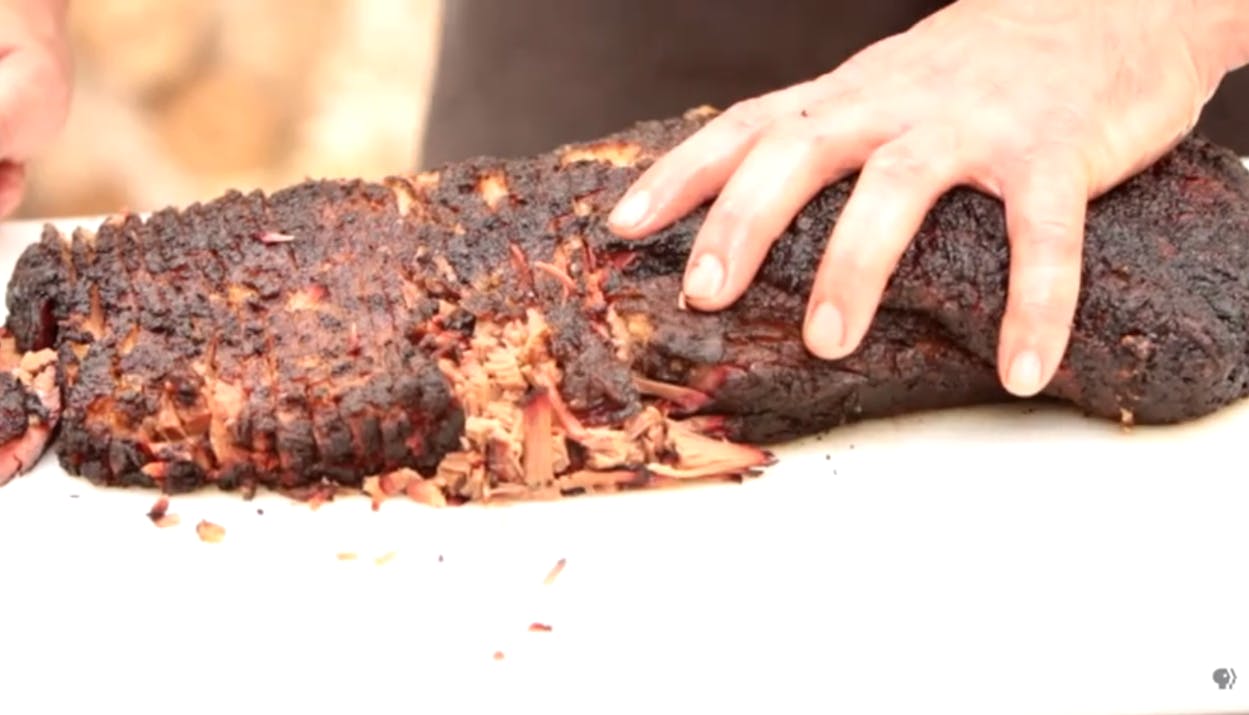When I’m watching a brisket being sliced, a few things make me shudder, like the aggressive purr of an electric knife, the whine of a deli slicer, and, the worst offense, watching the fat cap being discarded (but we’ll save that for another column).
I’ll concede that there are several ways to slice a brisket, but I should note that some of them are just wrong, like slicing with rather than against the grain. But again, there isn’t necessarily one right way to do it.
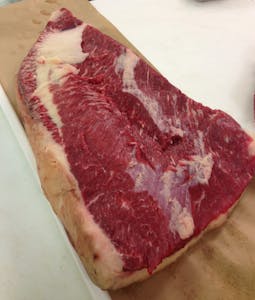
One of the challenges is that a whole brisket is made up of two muscles: the point and the flat. Slicing perpendicular to the grain of the muscle is the last defense against tough brisket. The most perfectly smoked brisket will be tough and stringy if sliced parallel to the grain, but the tricky thing is that the grain of the point and flat run in different directions. They also sit on top of one another, so how do you ensure that both are sliced against the grain?
Justin Fourton’s method for trimming, seasoning, and slicing the briskets at Dallas’s Pecan Lodge is to cut the front portion of the flat (that is uninterrupted by the point) against the grain until the point starts to get in the way. Fourton then separates the point and the remaining portion of the flat from one another along the thick seam of fat between the two muscles. This allows him to slice each of the two muscles directly perpendicular to the grain for maximum tenderness.
Tim Byres, of Smoke, just published a book by the same name, and in it he provides a few visuals on slicing a brisket. His method differs from Fourton in that Byres removes the point. (Some barbecue joints do this and save most, if not all, of the point for chopped beef and only slice the flat. I personally do not endorse this, and I know Byres endorses eating good fatty brisket as well.)
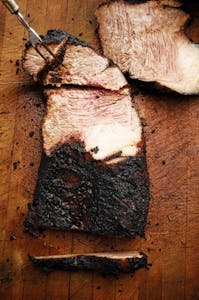
KLRU produced a series of barbecue how-to videos with Aaron Franklin of Franklin Barbecue. In the final video (at the 7:00 mark) he demonstrates his slicing technique. Franklin starts slicing the flat the same as Fourton, but when he gets to the point he turns the whole thing ninety degrees and continues slicing straight through both muscles. This results in cuts that are against the grain of both muscles, but they are at a forty-five degree angle instead of perpendicular.
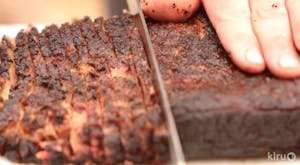
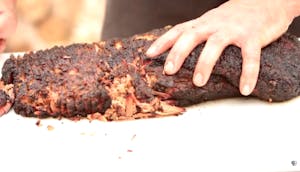
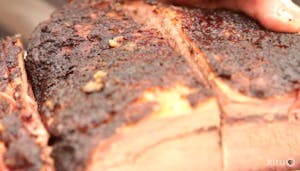
The thickness of a brisket slice also varies considerably. If you hear that electric slicer going then chances are the brisket isn’t very tender. Thin slicing is to tough brisket as sauce is to tasteless brisket. Sometimes it’s required. A thicker slice might be required to hold together an overcooked brisket. At other times a thick slice can be a detriment. I sat down for lunch this week to a plate of sliced brisket. It was a bit undercooked, but the toughness was exaggerated by very thick slices. A bit thinner slice would have improved the texture.
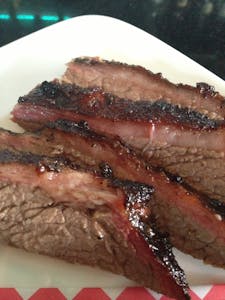
What is the optimal thickness for a slice of brisket? This is one of a few areas where I agree with the standard of the Kansas City Barbecue Society. For competition brisket the target is the thickness of a No. 2 pencil. Having a standard in competition keeps competitors from being able to hide over/under cooked brisket in their slicing method.
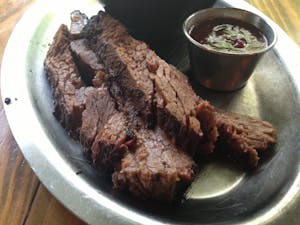
Let’s examine the equipment. Any good chef’s knife works well, but I like using a long serrated knife. You can get them for about $25 at any restaurant supply store. If the brisket is cooked to a good level of tenderness, it shouldn’t overwork your forearms to slice it manually.

I rarely see deli slicers used in Texas, but the famous Arthur Bryant’s in Kansas City uses them to build their enormous sandwiches of thinly sliced brisket. Maybe they know it’d be tough to eat otherwise. Snow’s BBQ in Lexington uses electric knives, as do others. It helps make the slicing an easier task when it’s your singular task for hours at a time, but I can’t stand the noise. When an electric knife is in action, its whine is all you hear while waiting in line for barbecue. It also doesn’t do much to help aesthetics. Even if the brisket is moist, the appearance of the shaggy meat makes it look dry as a bone.

There are so many ways to screw up a brisket from the time you buy it until the time you take it off the smoker, so don’t let the last step ruin a good thing. Slice only the flat, slice the point with the flat, but please, please, please do NOT slice with the grain.
- More About:
- Aaron Franklin


